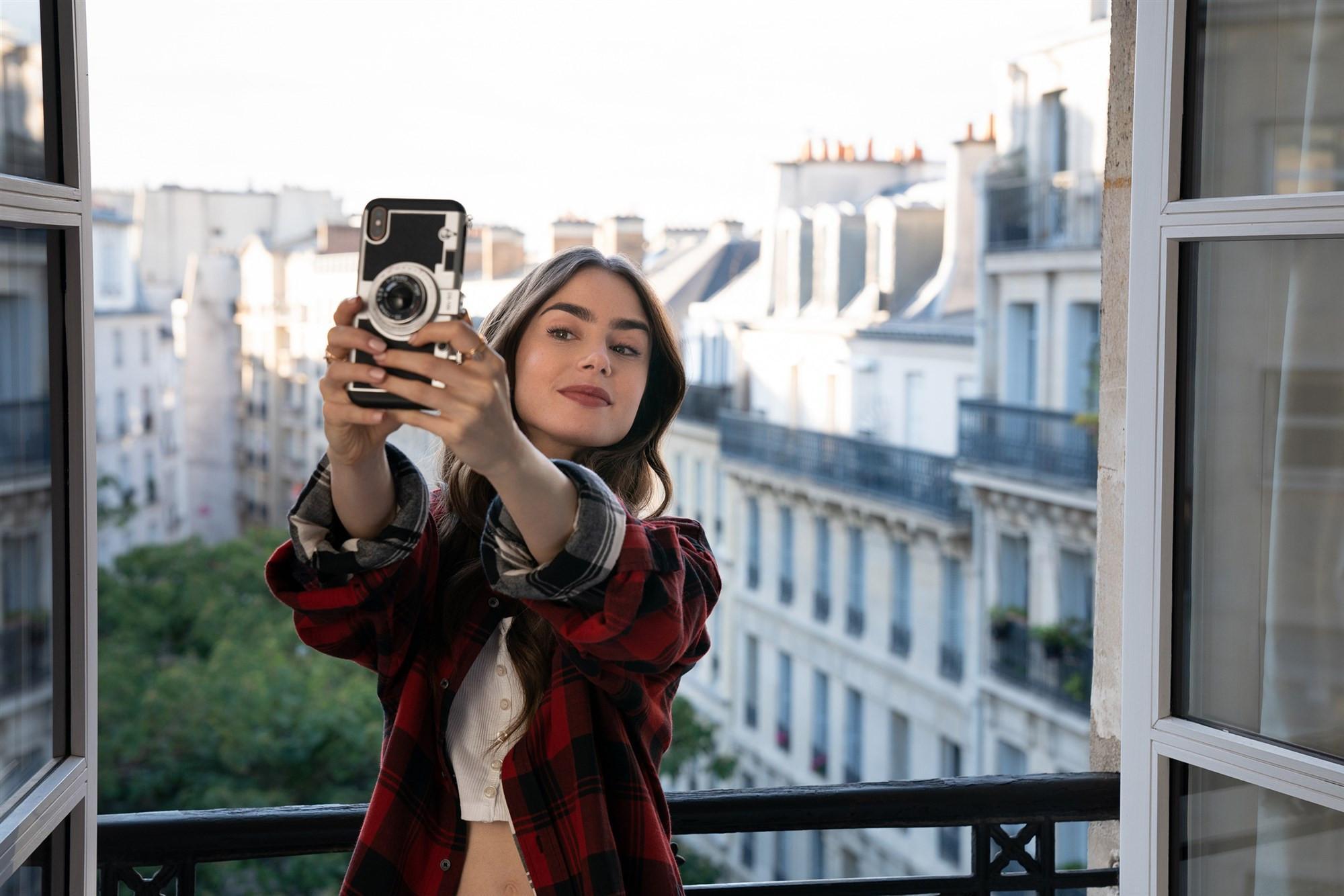
Love it, hate it or love to hate it: The smash-hit Netflix series “Emily in Paris,” which perpetuates long-held fantasies about the City of Light involving berets and pleasure-loving Frenchies, leaves no one indifferent.
After “An American in Paris,” “Funny Face,” “Moulin Rouge” or “Amelie,” the rose-tinted, romanced vision of Paris - with Instagram a new arrival - is once again laid out in all its glory in one of the most-watched series of the moment.
Many French critics have castigated the 10-episode series, tired of seeing Parisians portrayed as suspicious concierges, unfriendly bakers or waiters, or snobbish, lazy and/or flirty colleagues.
The American heroine, meanwhile, doesn’t seem to ever take the metro and lives in an attic room once supposedly used for maids that is implausibly big, above a handsome neighbor who is just as implausible.
It is a sugarcoated reality that irritates Lindsey Tramuta, an American writer who has lived in Paris for 15 years.
Tramuta has written “The New Paris” and “The New Parisienne” in which she tries to show there is much more to the city than old-worldly brasseries and corner cafes.
“We are in 2020 and we are still recycling the old cards,” she says, pointing to an economic and social reality that is overlooked in a city that has experienced jihadist attacks, the Yellow Vests protest movement and mass strikes. “It is not a harmless series of clichés,” she adds.
“When Paris is portrayed incessantly that way, for generations, it contributes to a problematic long term understanding of the place itself.”
One of these problems is the so-called Paris syndrome, which people have come to call the acute disappointment felt by some tourists when they arrive in the capital and see it as it is.
For Tramuta, the rose-tinted portrayal “is an example of the way Paris is exploited by film companies, luxury brands, authors, it makes the city look like an Instagram-filtered playground.”
Criticized too for magnifying the French-U.S. culture clash, “Emily in Paris” has nevertheless found success in recycling the decades-old clichés and Netflix is entirely at ease with that.
“If Emily had come to your city and not ‘in Paris’, what would the big cliches of the series be?,” it joked on Twitter.
“Take Emily in Marseille = it’s always sunny, the old port smells of sardines and Jul wanders the streets,” it added, referring to a rapper born in the French southern city.
For Agnes Poirier, the author of “Left Bank,” a book on Paris’s post-war intellectual and cultural life, “clichés all have an element of truth or they wouldn’t be clichés.
“Also, clichés die hard. And in comparison to American cities, yes, Paris looks and feels romantic and the French have a different and more tolerant attitude to extramarital affairs and marriage.” But, she adds: “Paris and Parisians fascinate for what are now, alas, purely historical reasons,” referring to the books or films that have created the image of “the city of love”, of unrestrained sexuality or of living the good life.
Ines de la Fressange, a fashion designer and co-author of the bestselling lifestyle book “La Parisienne,” says it might all be a dream Paris, but with “a little bit of truth in it all” nevertheless.
“We often forget that Americans see Paris as a type of Disneyland - Emily takes a selfie with a pain au chocolat,” says the former model. “But in New York, we too are amazed by the Empire State Building.
“Right now, Paris is suffering from a lack of tourists. If clichés on gastronomy, elegance and beauty make people want to come here, it’s not a problem.”
And the series, created by Darren Star who also made “Sex and the City”, has sparked a deluge of tweets from foreigners saying they want to live in Paris after having seen the series.
“It is a silly and funny rom-com that a lot of foreigners can relate to,” says Lane Nieset, an American freelance journalist who specializes in travel and gastronomy and has lived in Paris for nearly two years.
“For the Americans, the French still represents the epitome of class and sophistication.
And at a time of coronavirus pandemic when “they can’t travel, it makes them dream, it is an escape”.